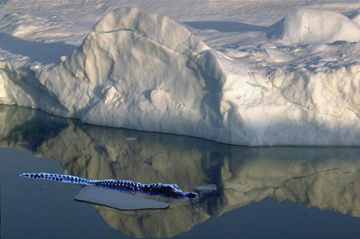
Geotimes Home | AGI Home | Information Services | Geoscience Education | Public Policy | Programs | Publications | Careers

 New sediment
cores from the New Jersey coastal plain suggest that large and rapid sea-level
changes occurred during the Late Cretaceous. This evidence is prompting researchers
to propose that the greenhouse world of that epoch, long thought to be ice-free,
may have been chillier than previously predicted.
New sediment
cores from the New Jersey coastal plain suggest that large and rapid sea-level
changes occurred during the Late Cretaceous. This evidence is prompting researchers
to propose that the greenhouse world of that epoch, long thought to be ice-free,
may have been chillier than previously predicted.Sara Pratt
Geotimes contributing writer
Back to top
 |
Geotimes Home | AGI Home | Information Services | Geoscience Education | Public Policy | Programs | Publications | Careers |